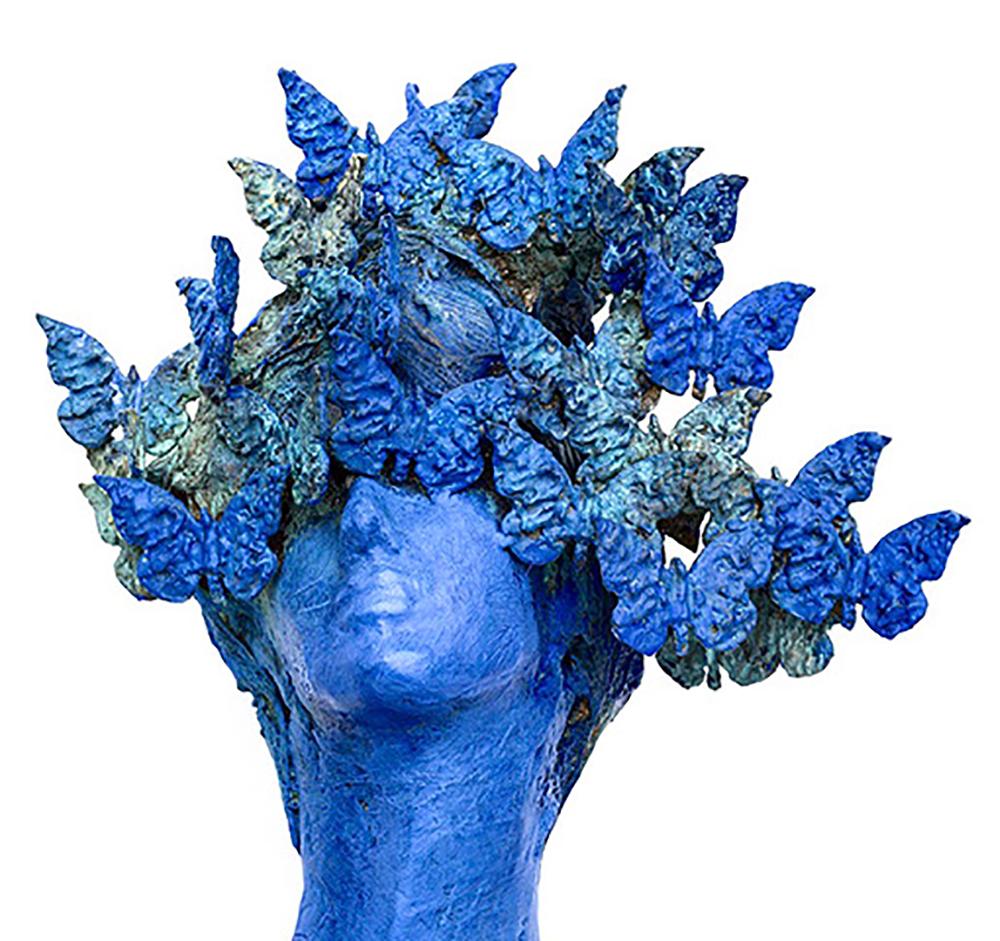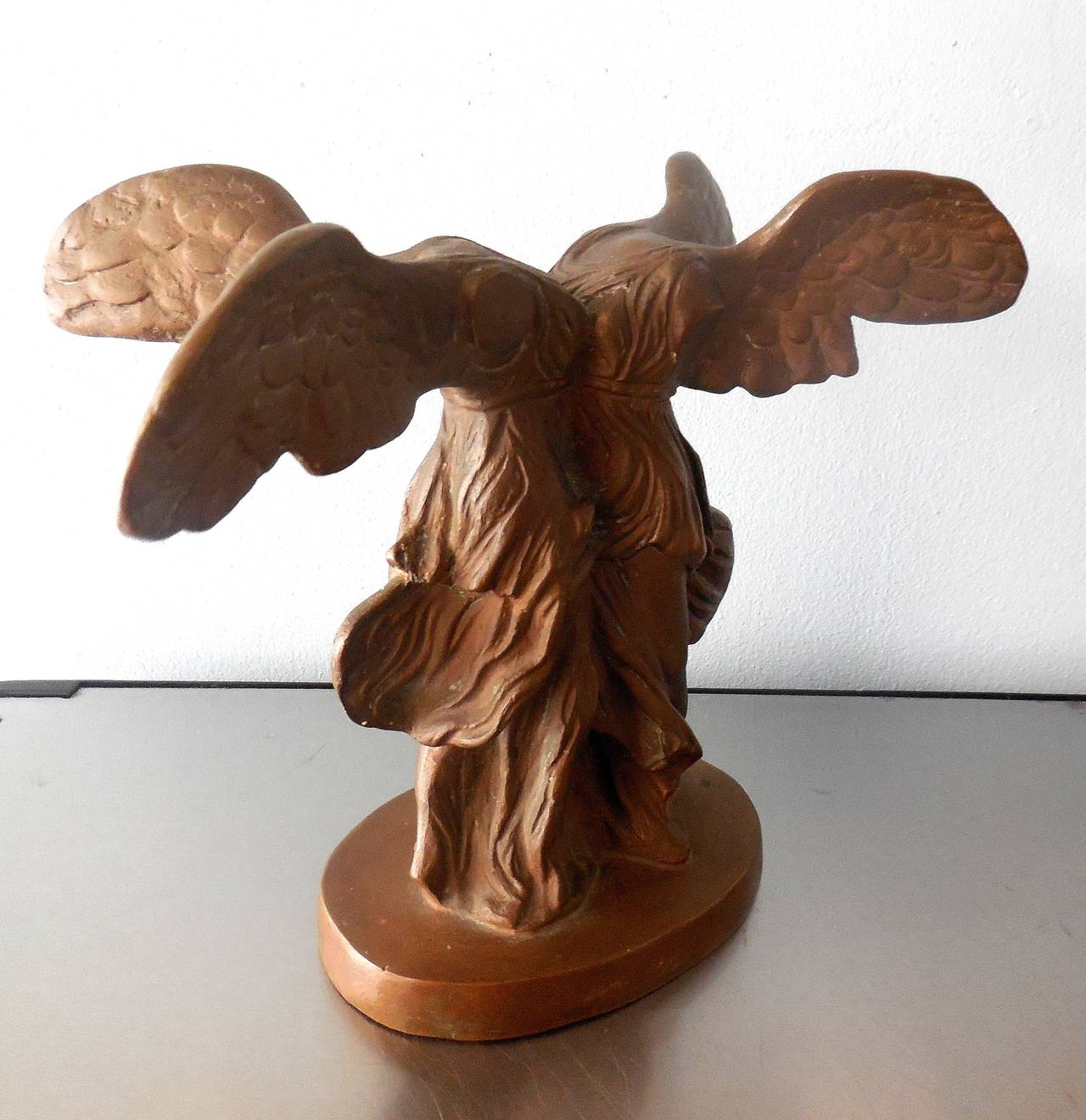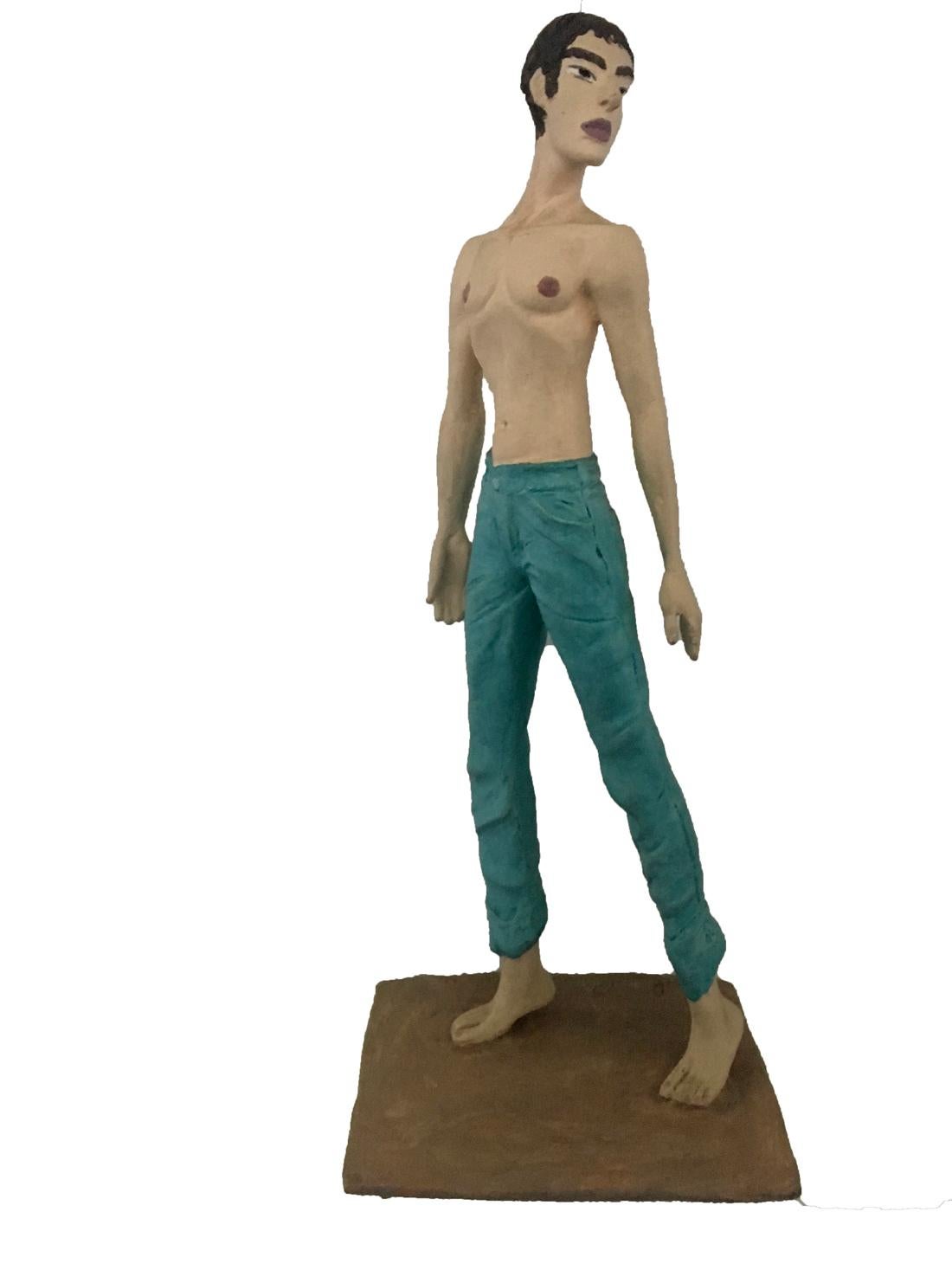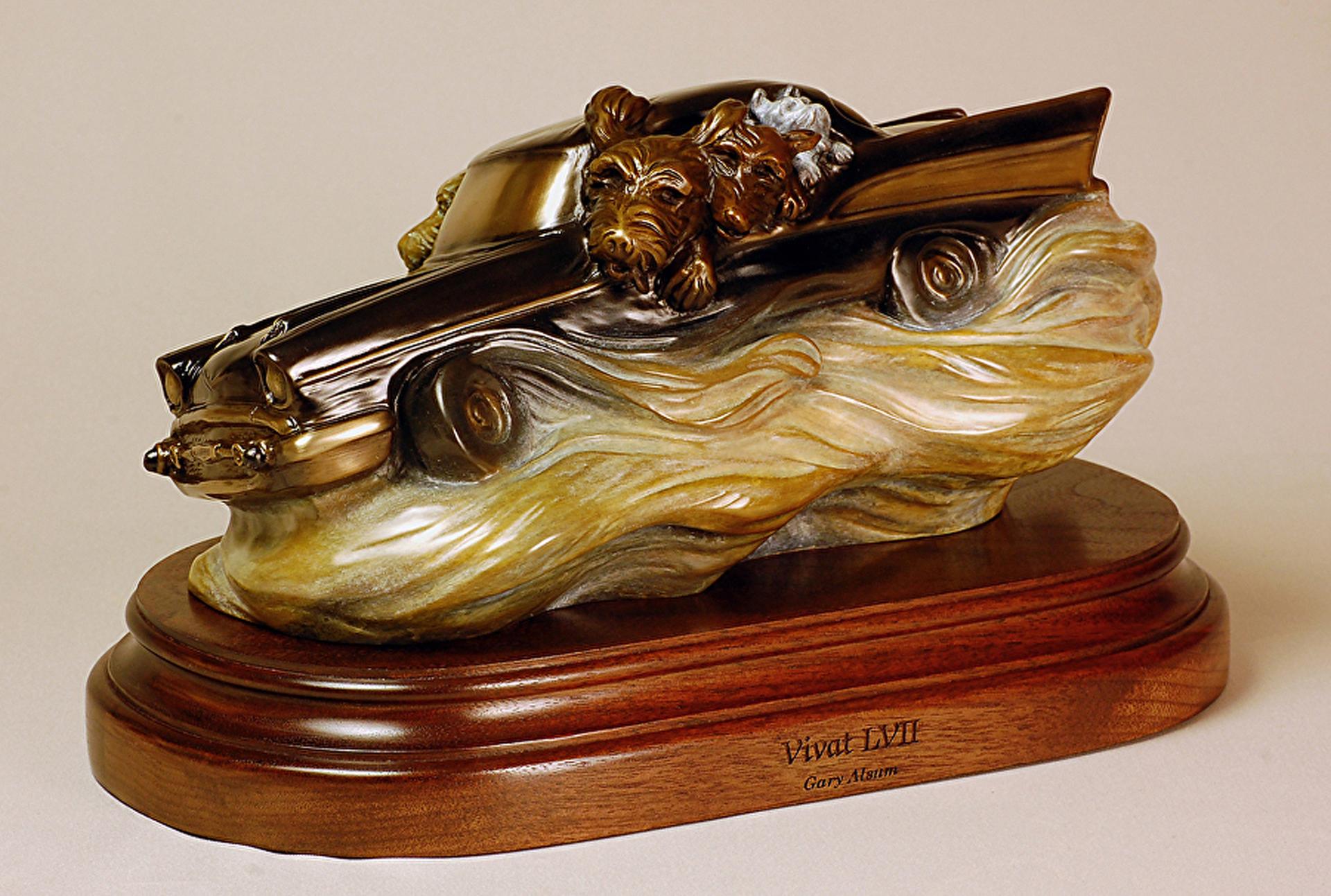Salvador DalíDon Quixote Bas Relief in Original Velvet Box1979
1979
About the Item
- Creator:Salvador Dalí (1904 - 1989, Spanish)
- Creation Year:1979
- Dimensions:Height: 27 in (68.58 cm)Width: 18.5 in (46.99 cm)
- Medium:
- Movement & Style:
- Period:
- Condition:
- Gallery Location:Missouri, MO
- Reference Number:1stDibs: LU747310023702
Salvador Dalí
Instantly recognizable by his waxed, upturned mustache, the flamboyant Salvador Dalí is one of modern art’s most distinctive figures. He is also one of the icons of the 20-century avant-garde Surrealist movement, whose dreamlike images, drawn from the depths of the unconscious, he deployed in paintings, sculptures, prints and fashion, as well as in film collaborations with Luis Buñuel and Alfred Hitchcock.
Dalí was born in Figueres, Catalonia, and even as a youngster, displayed the sensitivity, sharp perception and vivid imagination that would later define his artworks. In these, he conjured childhood memories and employed religious symbols and Freudian imagery like staircases, keys and dripping candles to create unexpected, often shocking pieces.
Dalí's use of hyperrealism in conveying Surrealist symbols and concepts that subvert accepted notions of reality is epitomized in what is perhaps his most recognizable painting, The Persistence of Memory (1931), in which he depicts the fluidity of time through melting clocks, their forms inspired by Camembert cheese melting in the sun. His artistic genius, eccentric personality and eternal quest for fame made him a global celebrity.
“Each morning when I awake, I experience again a supreme pleasure,” he once said. “That of being Salvador Dalí.”
Find original Salvador Dalí paintings, prints, sculptures and other works on 1stDibs.
- ShippingRetrieving quote...Ships From: Missouri, MO
- Return PolicyA return for this item may be initiated within 2 days of delivery.
- Study AimBy Carl KaubaLocated in Missouri, MOCarl Kauba "Study Aim" c. 1920 Bronze with Brown Patina Signed approx. 9.5 x 10 x 4 This Austrian sculptor was born in Vienna in 1865. His teachers were Karl Waschmann (1848-1905), known for his ivory sculptures and portrait plaquettes of contemporary celebrities, and Stefan Schwartz (1851-1924), who exhibited in Paris, including the Exposition Universelle of 1900 where he won a gold medal. Kauba's intricate bronzes, imported to the United States between 1895 and 1912, were cast at the Roman Bronze Works. Kauba was part of the nineteenth-century tradition of polychrome bronze sculpture. There were several types of patinas on a single statue: he could render the color of buckskin, variously tinted shirts, blankets, feathers, as well as beaded moccasins. Reportedly, Kauba came to America around 1886. Inspired by the Western tales of German author Karl May, he traveled to the West and made sketches and models. Critics, however, pointed out inaccuracies of costume and other details. For instance, the guns that his "mid-nineteenth-century" figures use are models produced after 1898. Apparently he did all of his works back in Vienna. Besides the variety of color, Kauba's bronzes show a great range of textures and his style is highly naturalistic. The sculptor loved ornament, some of which he rendered with coiled wire for reins, rope and feathers in headdresses. He successfully rendered figures in motion and often executed compositions with more than one figure. Berman (1974) illustrates non-Western subjects by Kaula, such as the pendants Where? and There (ca. 1910), a seated Scottish couple, impressive in the expressions and the details on patterned fabrics of both sitters. Another genre piece is Buster Brown...Category
Early 20th Century Realist Figurative Sculptures
MaterialsBronze
- La CothurneBy Agathon LéonardLocated in Missouri, MO"La Cothurne" 1901 Gilt Bronze Approx 21.5" High (to raised hand) Signed and Dated Foundry Mark "Susse Freres" Originally modeled in white biscuit porcelain this Greek dancer is a from a set of eight created for a dining table. They were immediately successful when they were exhibited in the Sevres pavilion at the 1900 Exhibition. Individual figures could be ordered and "La Cothurne" proved the most popular. Their success led to the firm of Susse buying the right to cast versions in metal. Agathon Leonard (1841-1923) is one of the well-known French Art Nouveau sculptors. Born in Lille in 1841, he first studied there before moving to Paris where he studied at the Ecole des Beaux Arts under Eugene Delaplanche. He gained recognition at the annual Expositiones Universelles, winning a Silver Medal there in 1889 and gold in 1900. His most important piece, Jeu L'echarpe, was the best known series of Sevres production at the turn of the century and sold out at the 1900 Expo in Paris and later was given as a gift by the French Gov't to Nicholas II at the Hermitage. His bronzes were cast at the Susse Freres Editeurs Foundry. He worked also in marble, quartz and ivory. He also produced Art Nouveau medallions...Category
Early 1900s Art Nouveau Figurative Sculptures
MaterialsBronze
- Going into BattleBy Carl KaubaLocated in Missouri, MOCarl Kauba "Going into Battle" c. 1920s Bronze with Brown Patina Signed approx 10 x 10 x 4 (including wooden base) This Austrian sculptor was born in Vienna in 1865. His teachers were Karl Waschmann (1848-1905), known for his ivory sculptures and portrait plaquettes of contemporary celebrities, and Stefan Schwartz (1851-1924), who exhibited in Paris, including the Exposition Universelle of 1900 where he won a gold medal. Kauba's intricate bronzes, imported to the United States between 1895 and 1912, were cast at the Roman Bronze Works. Kauba was part of the nineteenth-century tradition of polychrome bronze sculpture. There were several types of patinas on a single statue: he could render the color of buckskin, variously tinted shirts, blankets, feathers, as well as beaded moccasins. Reportedly, Kauba came to America around 1886. Inspired by the Western tales of German author Karl May, he traveled to the West and made sketches and models. Critics, however, pointed out inaccuracies of costume and other details. For instance, the guns that his "mid-nineteenth-century" figures use are models produced after 1898. Apparently he did all of his works back in Vienna. Besides the variety of color, Kauba's bronzes show a great range of textures and his style is highly naturalistic. The sculptor loved ornament, some of which he rendered with coiled wire for reins, rope and feathers in headdresses. He successfully rendered figures in motion and often executed compositions with more than one figure. Berman (1974) illustrates non-Western subjects by Kaula, such as the pendants Where? and There (ca. 1910), a seated Scottish couple, impressive in the expressions and the details on patterned fabrics of both sitters. Another genre piece is Buster Brown...Category
Early 20th Century Realist Figurative Sculptures
MaterialsBronze
- Mountain GoatBy Jules MoigniezLocated in Missouri, MOJules Moigniez "Mountain Goat" Bronze approx 11 x 9 x 4 inches Signed Jules Moigniez (1835-1894) Jules Moigniez was born in Senlis sur L'Oise, France ...Category
1870s Realist Figurative Sculptures
MaterialsBronze
- Chien Braque (Tom)By Pierre Jules MêneLocated in Missouri, MOPierre Jules Mene "Chien Braque" (Tom) Bronze approx. 5 x 9 x 4.25 Signed PIERRE JULES MENE (1810-1879) Pierre Jules Mene, (P. J. Mene), was born in Pa...Category
1860s Realist Figurative Sculptures
MaterialsBronze
- The Hunter and HoundBy Pierre Jules MêneLocated in Missouri, MOPierre-Jules Mene "The Hunter and Hound" (Le Valet de Limier) 1879 Bronze approx. 19 x 8 x 14 inches Signed PIERRE JULES MENE (1810-1879) Pierre...Category
1870s Realist Figurative Sculptures
MaterialsBronze
- Surreal Figurative Sculpture, "Lovers"Located in San Diego, CAThis is a one of a kind original bronze surrealist figurative sculpture by San Diego artist, Debbie Korbel. Its dimensions are 41" x 42" x 34". A certifi...Category
2010s Surrealist Figurative Sculptures
MaterialsBronze
- L'OiseauBy Joan MiróLocated in Palm Desert, CA"L'Oiseau" is a sculpture by Surrealist Joan Miró. The bronze sculpture is signed verso, "Miro" and inscribed 'N.3', and with foundry stamp 'Clementi cire perdue (Paris). André Bret...Category
1970s Surrealist Figurative Sculptures
MaterialsBronze
- Beautiful and elegant blue painted bronze sculpture "Clio, Musa della Storia"Located in Palm Beach, FLPatinated bronze, lost-wax casting. Antonio Nocera - Italian painter and sculptor, born in Caivano (Naples) in 1949. Antonio is currently engaged in the...Category
2010s Surrealist Abstract Sculptures
MaterialsBronze
- Rare 1966 Original Bronze Sculpture "The Two Nikes" edition of 6 Salvador DaliBy Salvador DalíLocated in Surfside, FLSalvador Dali (1904-1989) – The Two Nikes, Lilith, The Double Victory of Samothrace, Homage to Raymond Roussel Literature: Descharnes, Robert, Salvador Dalí, and Nicolas Descharnes. "Dalí, the hard and the soft: spells for the magic of form : sculptures & objects." (Azay-le-Rideau: Eccart, 2004), p, 114 (entry 270). Rare original bronze from edition of 6. This is exceedingly rare as most of his editions run into the hundreds. this is a true authentic Dali original sculpture. This was recently authenticated and comes accompanied by a Report of Authenticity from Frank Hunter, the Director of the Salvador Dalí Archives. Löpsinger 270 Executed in 1966, this bronze statue is incised with the artist’s signature and numbered ‘5/6’ on base. Published by Berrocal Foundry, the work measures 7 3/8 inches in height. Salvador Dalí (Spanish, 1904-1989) A leading proponent of Surrealism, Salvador Dalí is perhaps as well-known for his flamboyant personality as his superb technical skill. Dalí became acquainted with André Breton, a key figure of the Surrealist movement, in 1929. “The Persistence of Memory” is often cited as the most important work of this style. The Museum of Modern Art, New York, held a retrospective of the artist’s work in 1941. The next year, he began a more classical series of paintings, incorporating history, science and religion. In addition to painting, Dalí also made prints, photographs, films, jewelry and sculpture. His works can be found in collections worldwide, including the National Gallery, Washington, DC and the Salvador Dalí Museum. In 1928 Dali went to Paris where he met the Spanish painters Pablo Picasso and Joan Miro. He established himself as the principal figure of a group of surrealist artists grouped around Andre Breton, who was something like the theoretical "schoolmaster" of surrealism. Years later Breton turned away from Dali accusing him of support of fascism, excessive self-presentation and financial greediness. By 1929 Dali had found his personal style that should make him famous - the world of the unconscious that is recalled during our dreams. The surrealist theory is based on the theories of the psychologist Dr. Sigmund Freud. Recurring images of burning giraffes and melting watches...Category
1960s Surrealist Figurative Sculptures
MaterialsBronze
- Gianmario Italy 1987 Polychrome Cast Bronze Proof of AuthorLocated in Brescia, ITPaolo Cassarà, this Italian artist, usually utilized painted terracotta in real human dimensions for his Surrealist artworks. It was exceptional the use...Category
20th Century Surrealist Figurative Sculptures
MaterialsBronze
- Vivat LVIIBy Gary AlsumLocated in Loveland, COViva la LVII (Long Live the '57) by Gary Alsum Bronze 6.5" x 12.5" x 6" ed/75, number 1 in stock Shipping price includes the custom packing necessary for fine art. A new body of wor...Category
2010s Surrealist Figurative Sculptures
MaterialsBronze






